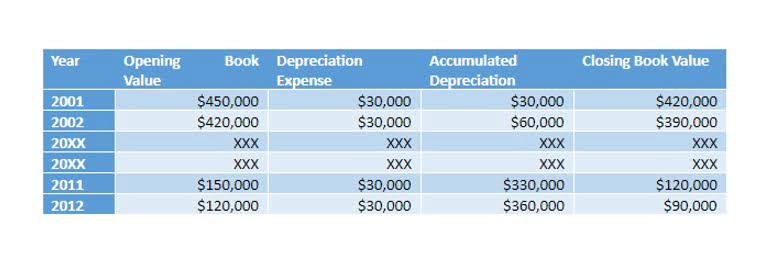
When sales are recorded using the FIFO method, the oldest inventory–that was acquired first–is used up first. FIFO leaves the newer, more expensive inventory in a rising-price environment, on the balance sheet. As a result, FIFO can increase net income because inventory that might be several years old–which was acquired for a lower cost–is used to value COGS. However, the higher net income means the company would have a higher tax liability. The average cost inventory valuation method uses an https://x.com/BooksTimeInc average cost for every inventory item when calculating COGS and ending inventory value.
LIFO and FIFO: Advantages and Disadvantages

All pros and cons listed below assume the company is operating in an inflationary period of rising prices. FIFO can be a better indicator of the value for ending inventory because the older items have been used up while the most recently acquired items reflect current market prices. Since LIFO uses the most recently acquired inventory to value COGS, the leftover inventory might be extremely old or obsolete. As a result, LIFO doesn’t provide an accurate or up-to-date value of inventory because the valuation is much lower than inventory items at today’s prices.
Calculating Inventory Cost Using FIFO
If the number of units sold exceeds the number of oldest inventory items, move on to the next oldest inventory and multiply the excess amount by that cost. One reason for valuing inventory is to determine its value for inventory financing purposes. Another reason for valuing inventory is that inventory costs are included in the cost of goods sold, which reduces business income for tax purposes.
What type of business would use FIFO?
FIFO stands for “first in, first out”, which is an inventory valuation method that assumes that a business always sells the first goods they purchased or produced first. This means that the business’s oldest inventory gets shipped out to customers before newer inventory. FIFO is also an important costing and inventory valuation method used by accountants to determine tax obligations and understand cost of goods sold.
It is crucial that employees are trained regarding the importance of FIFO and how to implement it in daily operations. First-in, first-out (FIFO) is a method for calculating the inventory value of a company considering the different prices at which the inventory has been acquired, produced, or transformed. On the third day, we assign the cost of the three units sold as $5 each.
- Lenders often review ending inventory as a key balance sheet metric when considering business loan applications.
- Using the FIFO method, the cost of goods sold (COGS) of the oldest inventory is used to determine the value of ending inventory, despite any recent changes in costs.
- Every time a sale or purchase occurs, they are recorded in their respective ledger accounts.
- This means that the business’s oldest inventory gets shipped out to customers before newer inventory.
- FIFO accounts for this by assuming that the products produced first are the first to be sold or disposed of.
On the basis of FIFO, we have assumed that the guitar purchased in January was sold first. The remaining two guitars acquired in February and March are assumed to be unsold. In a period of inflation, the cost of ending inventory decreases under the FIFO method. In the FIFO Method, the value of ending inventory is based on the cost of the most recent purchases. To find the cost valuation of ending inventory, we need to track the cost of inventory received and assign that cost to the correct issue of inventory according to the FIFO assumption. In accounting, First In, First Out (FIFO) is the assumption that a business issues its inventory to its customers in the order in which it has been acquired.
Other Costing Methods

Now that we have ending inventory units, we need to place a value based on the FIFO rule. To do that, we need to see the cost of the most recent purchase (i.e., 3 January), which is $4 per unit. To calculate the value of ending inventory using the FIFO periodic system, we first need to figure out how many inventory units are unsold at the end of fifo calculation method the period. Here’s a summary of the purchases and sales from the first example, which we will use to calculate the ending inventory value using the FIFO periodic system. On the second day, ten units were available, and because all were acquired for the same amount, we assign the cost of the four units sold on that day as $5 each.


For example, FIFO can cause major accounting discrepancies when COGS increases significantly. If accountants use a COGS calculation from months or years back, but the acquisition cost of that inventory has tripled in the time since, profits will take a hit. While the FIFO method has numerous advantages, it is not without its drawbacks. These disadvantages can affect financial reporting, tax liabilities, and suitability for certain industries. Understanding the potential downsides of FIFO is crucial for businesses to make informed decisions about their inventory valuation methods. Below, we delve into the key disadvantages of the FIFO method, highlighting scenarios where it might pose challenges or be less advantageous.
- It’s important to note that the FIFO method is designed for inventory accounting purposes.
- Because of inflation, businesses using the FIFO method are often able to report higher profit margins than companies using the last in, first out (LIFO) method.
- With FIFO, it is assumed that the cost of inventory that was purchased first will be recognized first.
- FIFO is a good method for calculating COGS in a business with fluctuating inventory costs.
- Higher reported gross income also leads to an inflated representation of profits.
While many businesses calculate their ending inventory annually, it’s often beneficial to perform this task more frequently throughout the year to stay on top of actual inventory costs. Ending inventory, also known as closing inventory or closing stock, represents the total value of your unsold products https://www.bookstime.com/ at the end of a specific accounting period. For example, if you sold 15 units, you would multiply that amount by the cost of your oldest inventory. Using the FIFO inventory method, this would give you your Cost of Goods Sold for those 15 units. To calculate FIFO, multiply the amount of units sold by the cost of your oldest inventory.
